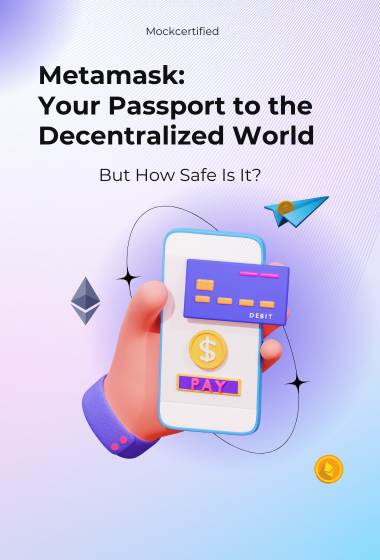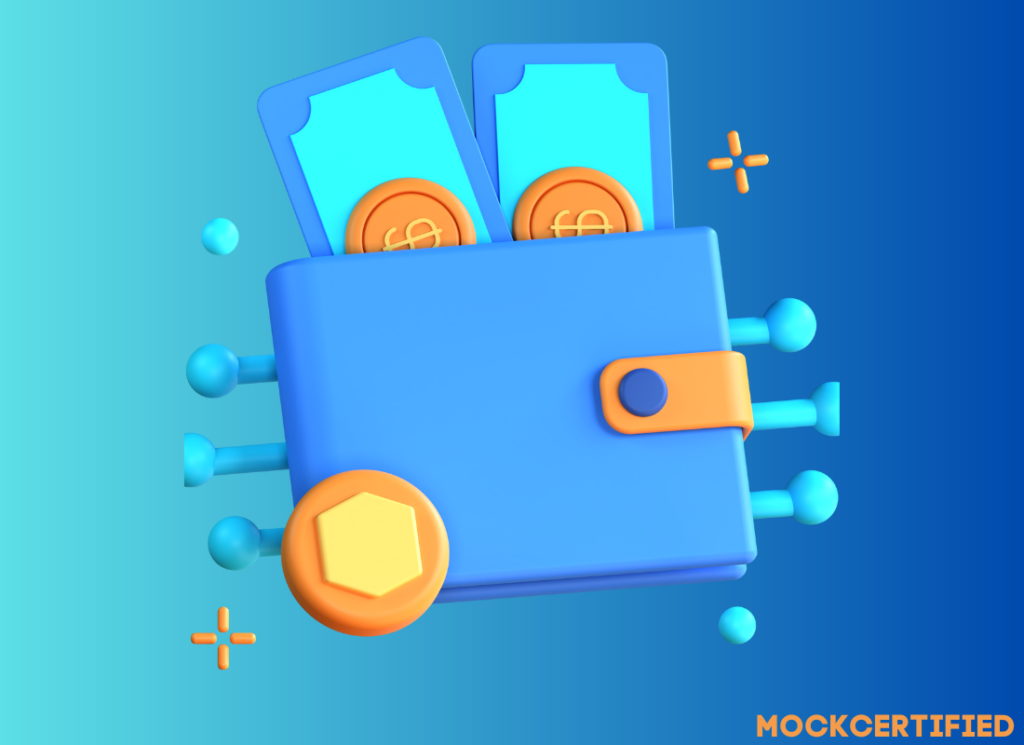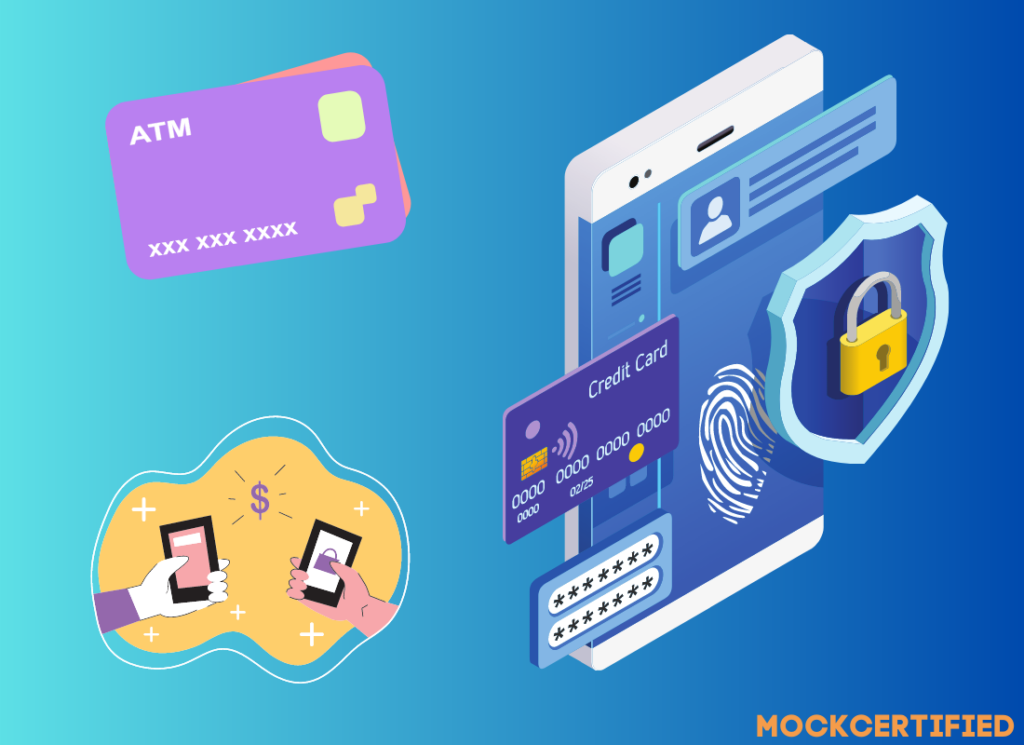Blog
Is Metamask safe: A Quick Read
Sara Ali
Apr 29, 2023
5 min read

Popular browser tool Metamask lets users engage with decentralized Ethereum blockchain apps (dApps). Acting as a digital wallet, it lets consumers handle their Ethereum accounts and securely keep their money. Security is the first priority for consumers of any digital tool handling private financial data. We will be talking about best practices for securely using Metamask and looking at its security policies.
Table of Contents
Introduction to Metamask

What is Metamask?
Metamask is a software wallet that connects a user’s web browser to the Ethereum blockchain.
Blockchain is an innovative way of keeping track of things using a computer that cannot be wiped or modified once it has been recorded.
In case you would like to challenge your understanding of blockchain, Click here.
Currently, Metamask only supports Ethereum and layer 2 networks. It is accessible as a browser extension for common web browsers, including Chrome, Firefox, and Brave, and it allows users to smoothly manage their Ethereum accounts, transfer and receive cryptocurrency, and engage with dApps.
How does Metamask work?
Metamask generates a unique Ethereum account for each user, complete with a private key and a seed phrase. The private key is a cryptographic key used to sign transactions, whereas the seed phrase is a collection of 12 or 24 words that may be used to recover the account in the event of loss or theft. Metamask also has a user-friendly interface that allows users to engage with dApps and securely sign transactions.
What’s new in Metamask?
- MetaMask’s latest update (v10.33) brings a cleaner look and more user-friendly connections for sites, networks, and accounts.
- The wallet’s top section, which previously displayed wallet address, connection status, and network selection, is now merged to offer easier access to prompts.Notably, site connections are now more prominent, and users can approve transactions conveniently through notifications.
- MetaMask maintains its leading position as a noncustodial soft wallet in the Web3.0 space, even with increasing competition.
- Enhanced protective features in the new MetaMask version enhance platform security.
Benefits of using Metamask
- Enhanced security features: Metamask offers several security features that enhance the safety of users’ Ethereum accounts. These include the use of private keys and seed phrases, password protection, and HTTPS encryption. Private keys and seed phrases are stored locally on users’ devices and are never transmitted over the internet, reducing the risk of unauthorised access.
- User-friendly interface: Metamask features an easy-to-use interface that allows even inexperienced users to manage their Ethereum accounts and engage with dApps. The extension provides clear prompts and notifications for transactions, making it difficult for users to accidentally send funds to the wrong address or fall victim to scams.
- Access to decentralised applications (dApps): Metamask gives customers quick access to a diverse set of dApps on the Ethereum network. These dApps include decentralised exchanges, games, decentralised finance (DeFi) platforms, and more. By using Metamask, users can securely interact with these dApps and take advantage of the benefits of blockchain technology.
Is Metamask safe?

Metamask is designed with security in mind and employs various security measures to protect users’ Ethereum accounts. But is Metamask safe?
The answer is: like any other digital tool, it is not completely immune to security risks. It is essential for users to understand the security measures implemented by Metamask and follow best practices to ensure the safe usage of this software wallet.
Understanding Metamask security measures:
Metamask incorporates several security measures to protect users’ Ethereum accounts:
- Private key and seed phrase: Metamask generates a unique private key and seed phrase for each user, which are stored locally on their device and are never transmitted over the internet. These cryptographic keys are crucial for signing transactions and should be kept secure and confidential.
- Password protection: Metamask allows users to create a password for their accounts, adding an extra degree of security. It is critical to develop a strong, unique password that you do not share with anyone.
- HTTPS encryption: Metamask uses HTTPS encryption for all communication between the extension and the Ethereum blockchain, ensuring that transactions and data are transmitted securely over the internet.
- Trusted sources for downloads: Metamask should only be downloaded from official sources, such as the Metamask website or the respective app stores of supported web browsers. Downloading from untrusted sources increases the risk of downloading malicious software.
Common security concerns with Metamask

While Metamask incorporates robust security measures, there are some common security concerns that users should be aware of:
- Phishing attacks: Phishing attacks are a prevalent security concern in the cryptocurrency space, and Metamask users are not immune to them. Phishing attacks involve tricking users into revealing their private keys or seed phrases by posing as legitimate entities. Users should always verify the authenticity of websites and never enter their private keys or seed phrases on suspicious websites or links.
- Malware and keyloggers are harmful programmes that may infect users’ devices and record their inputs, including private keys and seed phrases. Users should use up-to-date antivirus software to secure their devices and avoid clicking on suspicious links or installing unfamiliar applications.
- Fake websites and scams: Scammers often create fake websites or dApps that resemble legitimate ones, tricking users into revealing their private keys or seed phrases. Users should always verify the authenticity of websites and dApps before interacting with them and avoid falling for investment scams or fraudulent schemes.
Best practises for using Metamask securely

Users should follow these best practises to ensure safe usage of Metamask:
- Keeping your private key and seed phrase safe: Users should never discuss their private key or seed phrase with anybody, including online platforms, strangers, or even close friends and family. These keys should be safely kept offline in a variety of encrypted and backup locations.
- Creating a strong and unique password: Users should set a strong and unique password for their Metamask account, avoiding common passwords or easily guessable information. Users should also enable two-factor authentication (2FA) for an additional layer of security.
- Verifying website URLs: Users should always verify the authenticity of the website URLs before entering their private keys or seed phrases. They should ensure that they are on the official Metamask website or a legitimate dApp’s website by double-checking the URL and looking for HTTPS encryption.
- Regularly updating Metamask and your browser: Users should ensure that their Metamask extension and web browser are up-to-date with the most recent security fixes and upgrades. This guarantees that any known security flaws are addressed, lowering the chance of security breaches.
- Using hardware wallets with Metamask: When used in combination with Metamask, hardware wallets such as Ledger or Trezor provide an extra layer of protection. Hardware wallets store users’ private keys offline, reducing the risk of online threats. Users can connect their hardware wallets to Metamask and sign transactions securely without exposing their private keys or seed phrases to the internet.
- Being cautious of phishing attempts: Users should be cautious of phishing attempts and avoid clicking on suspicious links or revealing their private keys or seed phrases on unknown websites or links. Always verify the authenticity of websites and dApps before interacting with them.
- Using trusted sources for downloads: Users should only download Metamask from official sources, such as the Metamask website or the respective app stores of supported web browsers. Downloading Metamask or any other software from untrusted sources should be avoided since it may include malware or other security hazards.
- Regularly monitoring account activity: Users should regularly monitor their Metamask account activity and review their transaction history for any unauthorised or suspicious transactions. If any unusual activity is detected, users should take immediate action, such as changing passwords or contacting Metamask support.
- Back up your seed phrase offline: Users should always back up their Metamask seed phrase offline and store it securely in multiple locations. This ensures that even if their device is lost or compromised, they can still recover their account using the seed phrase.
- Educating yourself about security best practises: Users should stay informed about the latest security best practices and trends in the cryptocurrency space. Educate yourself about common security risks, phishing attempts, and how to protect your Metamask account.
Is MetaMask Safer on Mobile?

MetaMask is available as both a desktop extension and a mobile app. While the mobile version of MetaMask offers a similar set of features as its desktop counterpart, it is important to understand the nuances of security when it comes to mobile devices.
Mobile wallets are typically more vulnerable to security threats due to factors such as potential malware attacks or physical device loss.
However, MetaMask takes precautions to secure your mobile wallet, such as device encryption, secure key storage, and password protection.
It is crucial to follow best practices such as keeping your mobile operating system updated and avoiding installing suspicious applications to ensure the safety of your MetaMask wallet on mobile.
Which Is Better: MetaMask or Trust Wallet?

MetaMask and Trust Wallet are both popular choices for managing Ethereum-based tokens and interacting with dApps.
The choice between the two ultimately depends on your specific needs and preferences. MetaMask offers a user-friendly interface, extensive browser compatibility, and seamless integration with various dApps.
On the other hand, Trust Wallet provides a mobile-first experience with additional features like multi-chain support and a built-in DEX (decentralized exchange). Both wallets prioritize security, with features such as private key encryption and secure storage.
It is advisable to evaluate the features, user experience, and security measures of each wallet to determine which one aligns better with your requirements.
Is Binance Wallet Safer Than MetaMask?

Binance Wallet and MetaMask serve different purposes in the cryptocurrency ecosystem. Binance Wallet is primarily designed for managing assets on the Binance blockchain and participating in Binance-related services.
MetaMask, on the other hand, is focused on Ethereum-based assets and dApp interactions. Both wallets implement security measures such as private key encryption and hardware wallet integration to safeguard your assets.
While Binance has a robust reputation in the industry, it is important to understand that the safety of a wallet depends on various factors, including your own security practices.
It is recommended to carefully review the security features and reputation of any wallet you choose to ensure the safety of your digital assets.
Is MetaMask Only for ETH?

MetaMask originated as an Ethereum wallet and remains primarily focused on Ethereum-based assets.
However, it has expanded its functionality to support other Ethereum-compatible chains such as Binance Smart Chain and Polygon.
This means that MetaMask can be used to interact with dApps and manage tokens on these supported chains as well.
It is important to note that MetaMask’s core functionality and user experience are optimized for Ethereum, but its compatibility with other chains provides users with additional flexibility.
What Is Gas Fee Limit in MetaMask?
In the Ethereum network, gas fees are required to process transactions and execute smart contracts.
MetaMask allows users to set a gas fee limit, which represents the maximum amount of gas fees they are willing to pay for a transaction. Setting a gas fee limit helps users control their transaction costs and avoid unexpected fees during times of network congestion or high gas prices.
However, it is important to strike a balance between setting a reasonable gas fee limit and ensuring that your transactions are confirmed in a timely manner.
Keeping an eye on current gas prices and adjusting your gas fee limit accordingly can help optimize your transaction experience on MetaMask.
MetaMask, one of the most widely used crypto wallets, is making major strides in simplifying blockchain transactions. With over 100 million users, MetaMask is evolving beyond just storing crypto—it’s now enabling real-world payments and solving cross-chain complexities.
What’s New in 2025?
Blockchain Transactions
MetaMask has integrated with Freename, a leading Web3 domain marketplace, to make crypto payments easier. This partnership allows users to replace complex wallet addresses with simple domain names, making transactions more intuitive.
With the new Freename Resolution Snap, users can resolve domains from multiple providers (Freename, ENS, UD, etc.) directly within their MetaMask wallet. This means:
- Instead of copying and pasting long wallet addresses, users can just “Pay with Domains.”
- Cross-chain transactions become simpler, reducing errors and making crypto payments more user-friendly.
MetaMask Card: Bringing Crypto to the Real World
MetaMask’s latest innovation is its crypto payment card, launched in partnership with Baanx and Mastercard. This card allows users to spend crypto directly from their MetaMask wallet without needing banks or extra steps.
Here’s how it works:
- When you tap the card at a store, the system checks your wallet for funds.
- Smart contracts handle the transaction in real-time.
- The payment is processed on-chain in under five seconds.
- The merchant receives their local currency as usual.
This smooth experience means users can pay for goods and services with crypto without having to first convert it into fiat.
Why This Matters
For users in stable economies, the MetaMask card offers a convenient way to use crypto like cash. But in regions with unstable currencies—such as Latin America—this technology is even more impactful.
People in countries like Brazil, Colombia, and Mexico are using the MetaMask card to spend in dollars instead of their local currencies, often increasing their purchasing power by 25-30%.
The card has already launched in multiple countries, including the US, UK, EU, Mexico, Colombia, and Brazil. By the end of the year, Baanx plans to expand it to 80 countries.
Beyond Just Payments: The Future of Crypto Banking
MetaMask is leading the shift towards non-custodial neobanking, which allows users to spend crypto without relying on traditional banks. Unlike banks that control your funds, MetaMask keeps transactions decentralized, meaning:
- Users control their own assets at all times.
- No need to trust a bank or exchange with your money.
- Crypto payments are processed instantly, 24/7, without banking hours.
This is a major step toward making crypto a mainstream payment method.
Regulatory Challenges and the Road Ahead
MetaMask’s innovations are game-changing, but regulatory problems remain, especially in the US. Other regions like the EU, Singapore, and Hong Kong have introduced clear rules for stablecoin transactions, but US regulations are still catching up.
Despite these challenges, MetaMask is proving that crypto can integrate seamlessly into everyday life. With stablecoin transactions already settling trillions of dollars, and new payment infrastructure developing rapidly, the future of decentralized finance is becoming a reality.
MetaMask isn’t just a crypto wallet anymore—it’s reshaping how digital money is used worldwide.
Conclusion

Metamask is a widely used and popular software wallet for managing Ethereum accounts.
While it offers robust security measures, users need to be aware of common security concerns and follow best practices to ensure the safe usage of Metamask.
By keeping private keys and seed phrases secure, being cautious of phishing attempts, using trusted sources for downloads, and staying informed about security best practices, users can enhance the security of their Metamask accounts and protect their valuable Ethereum assets.
If you liked this article, you can check out more by clicking here
Share this post
Popular
Get the most out of the hot topics with our favorite blogs!